



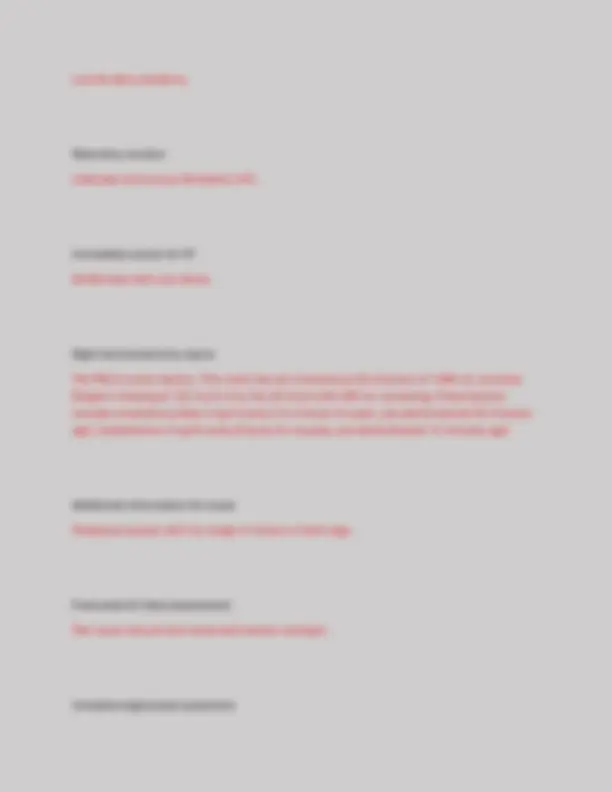
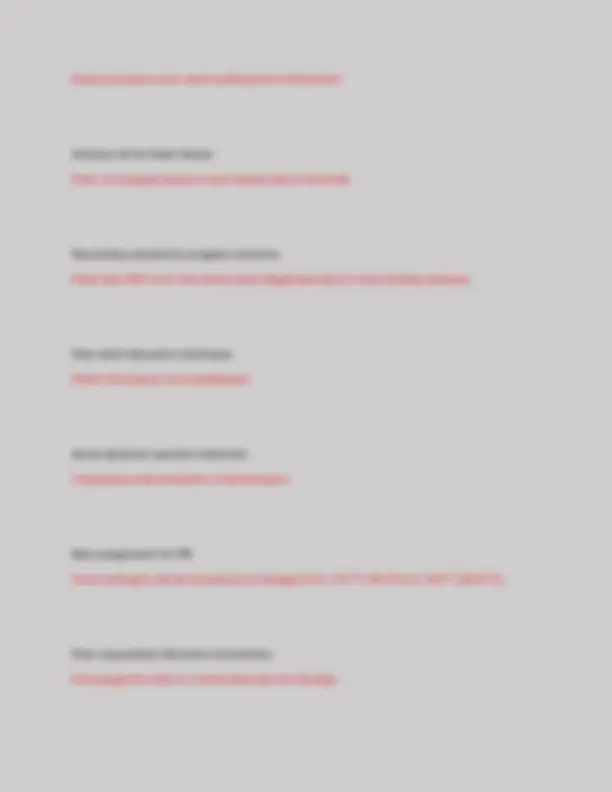

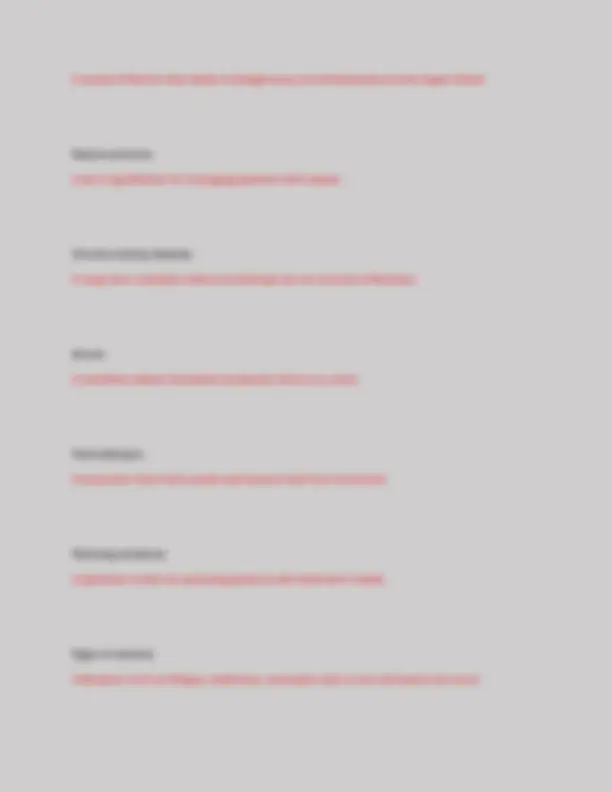
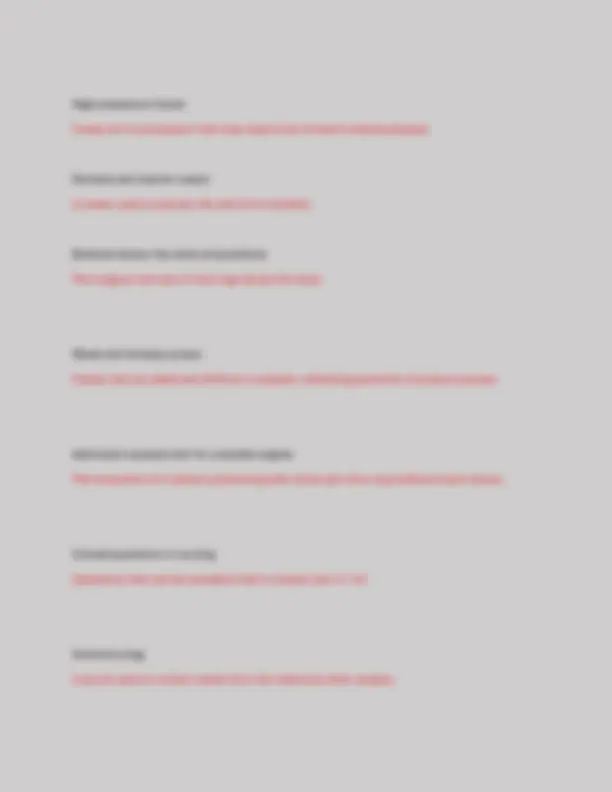
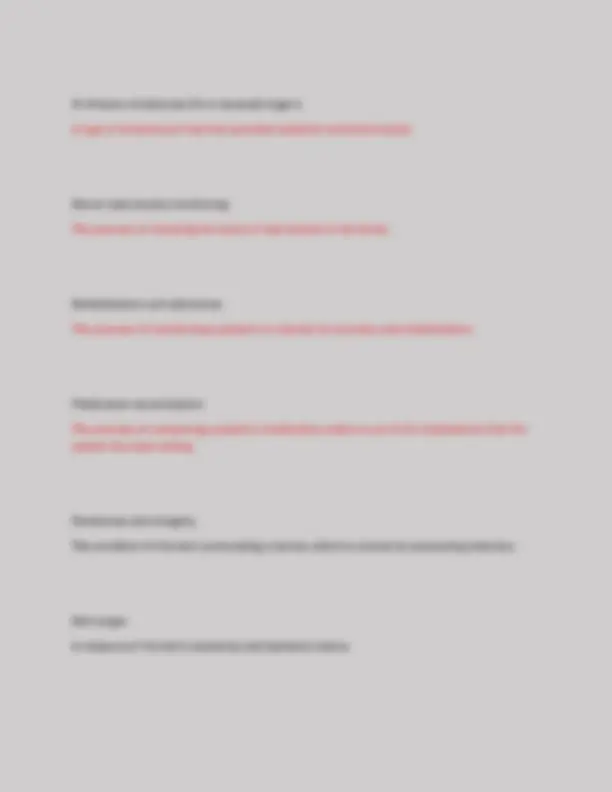
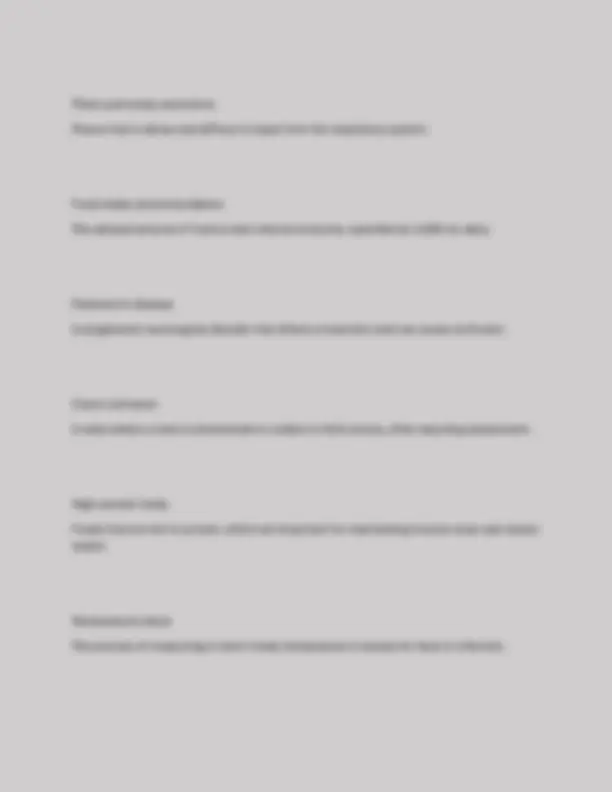
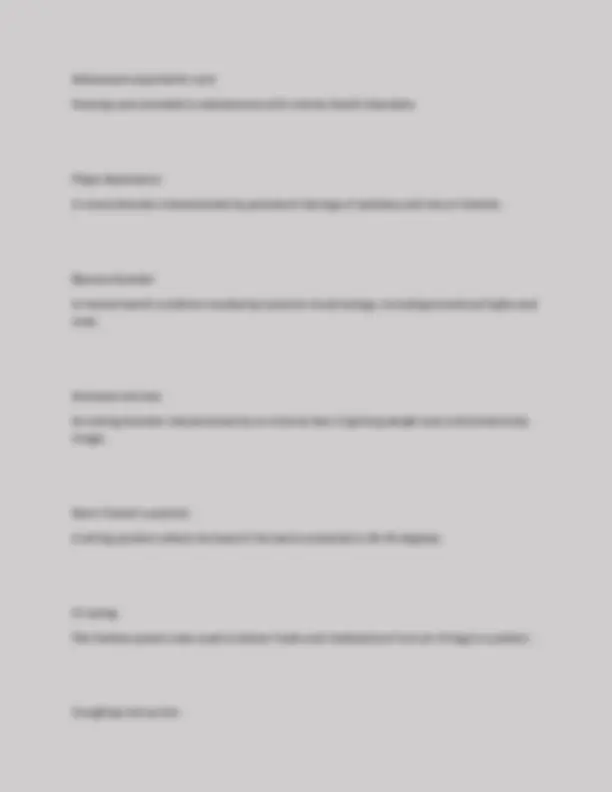
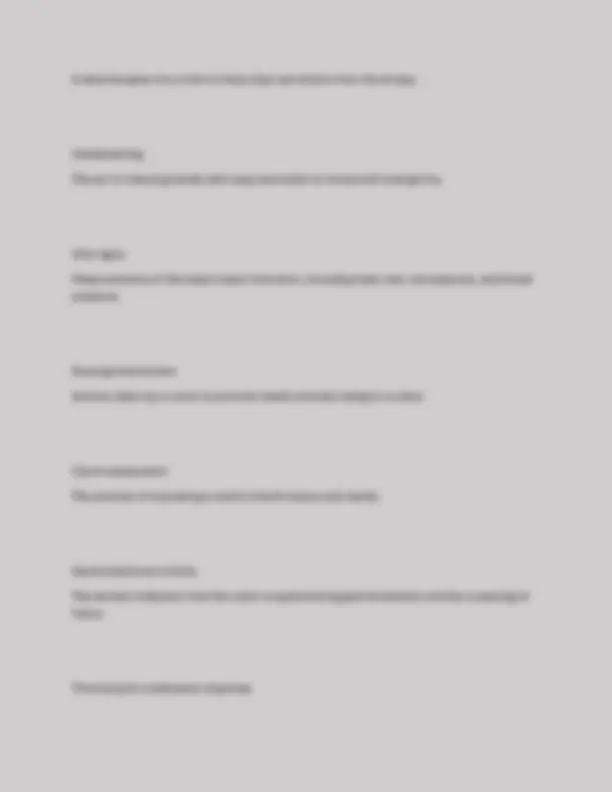
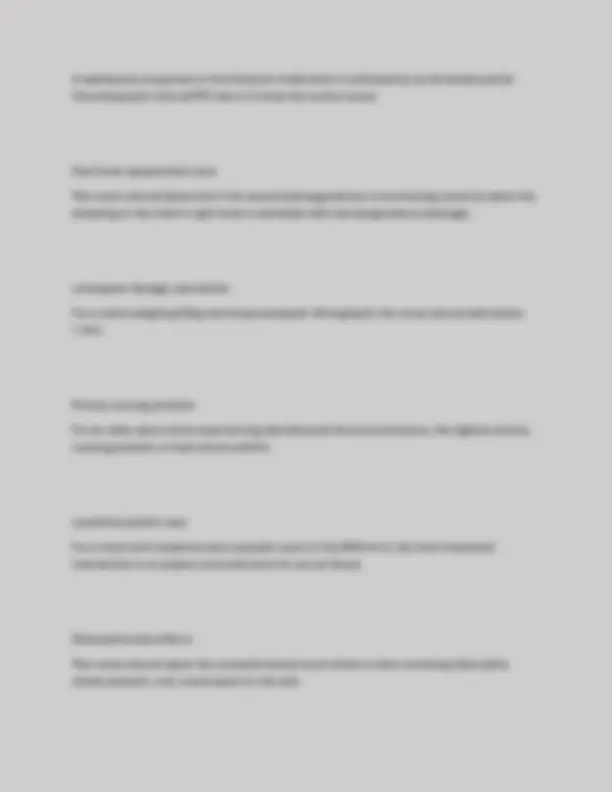
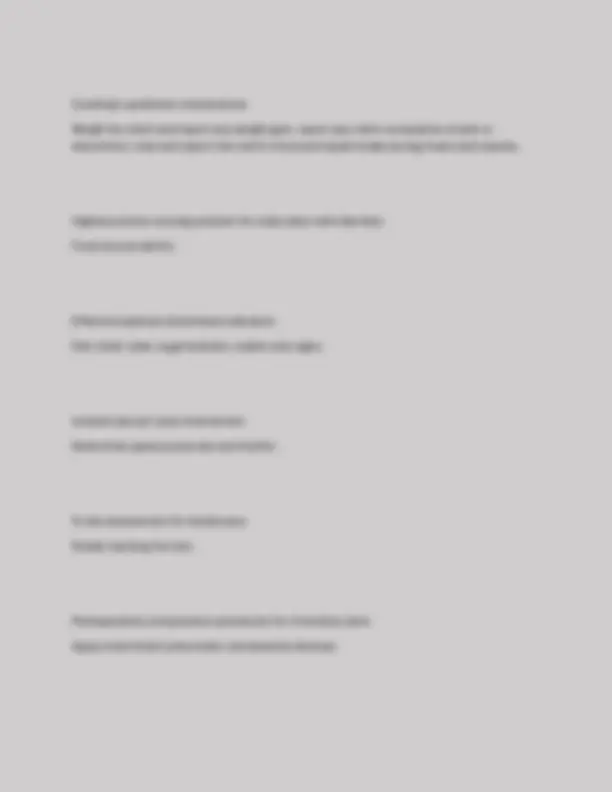
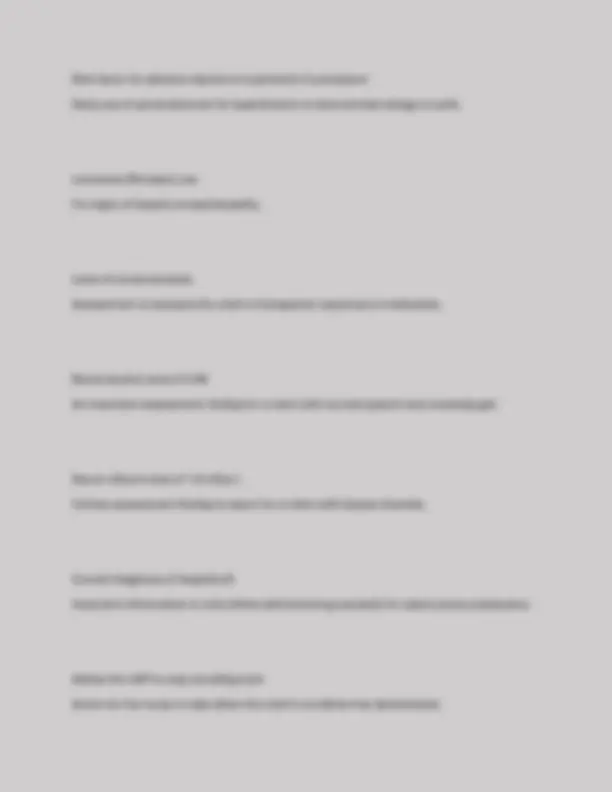
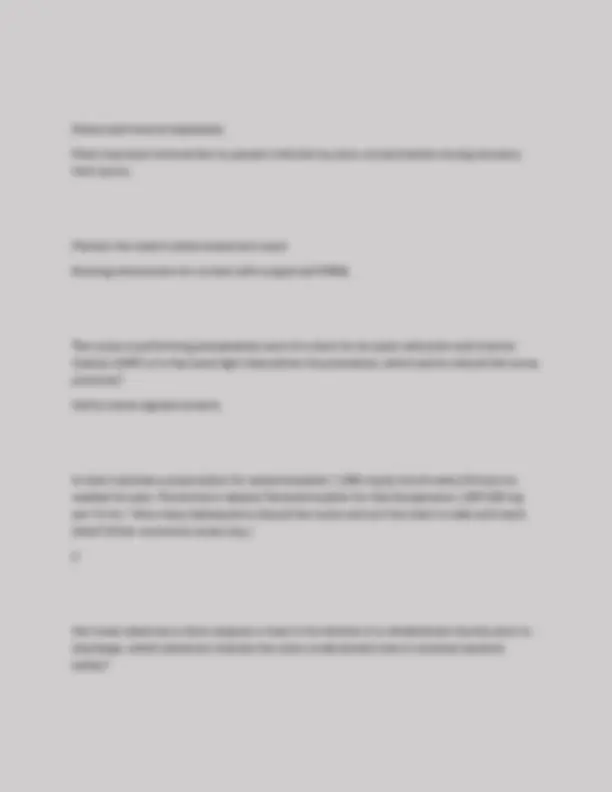
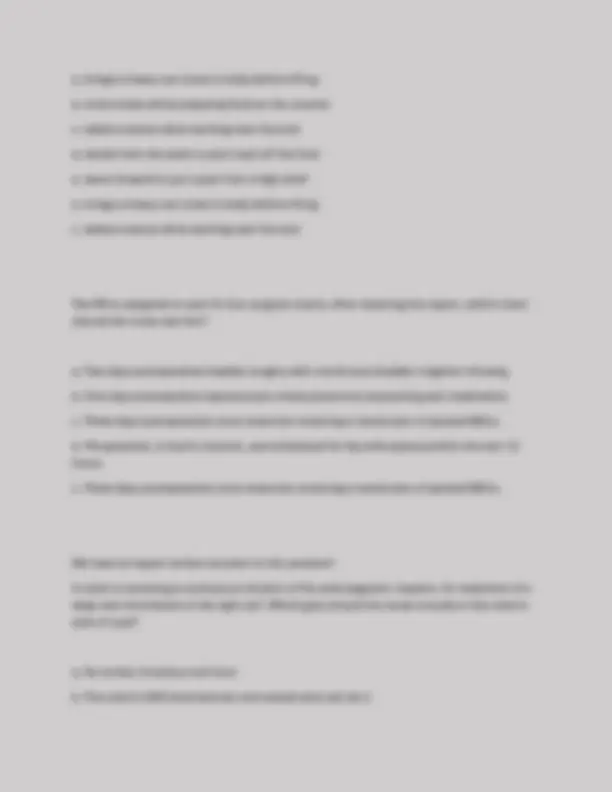
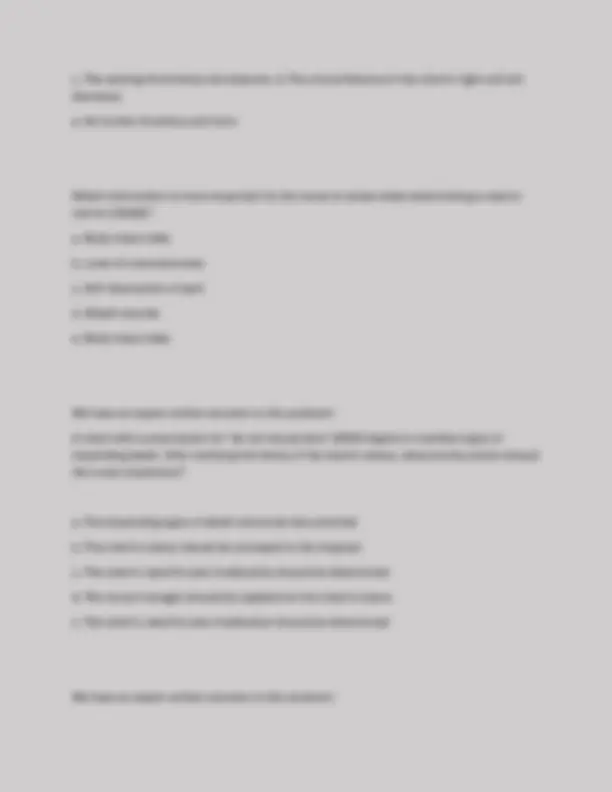
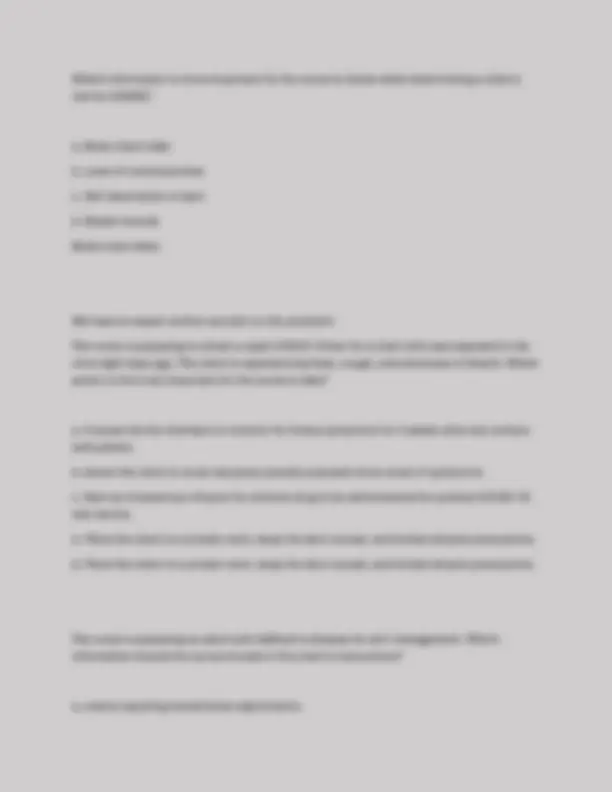
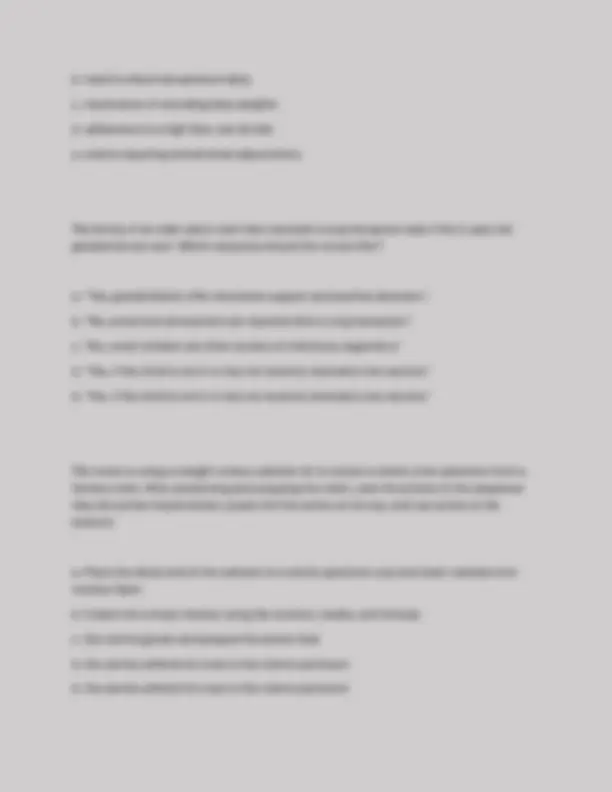
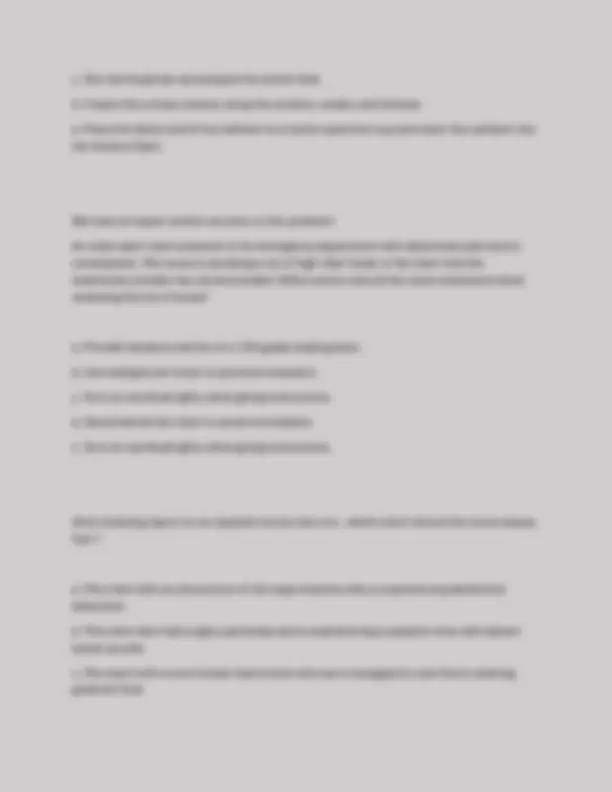
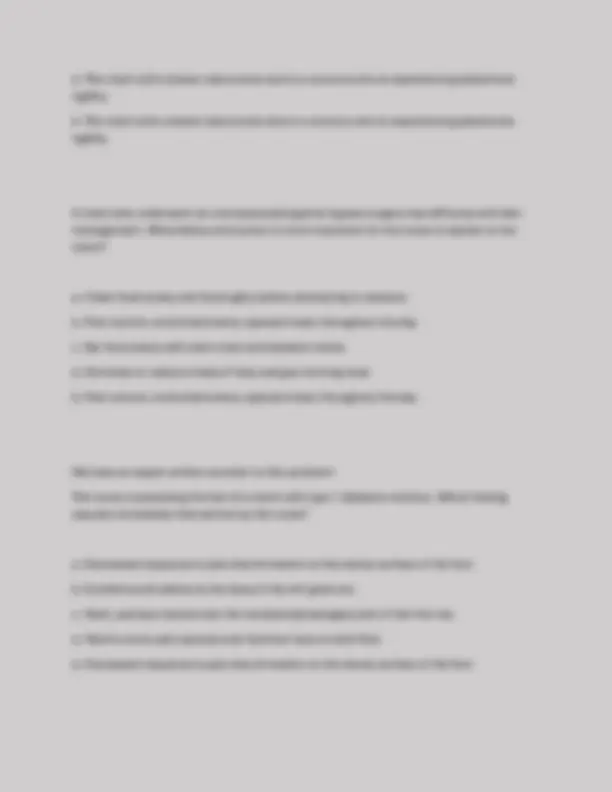
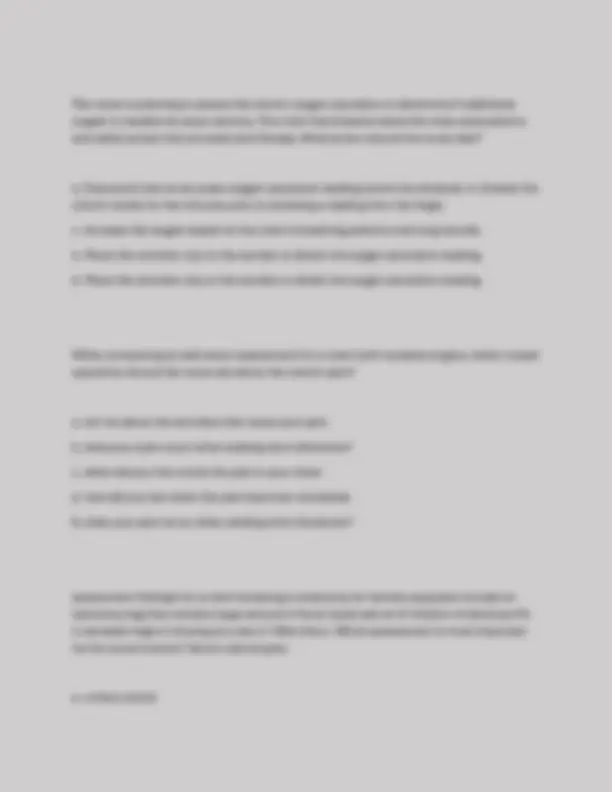
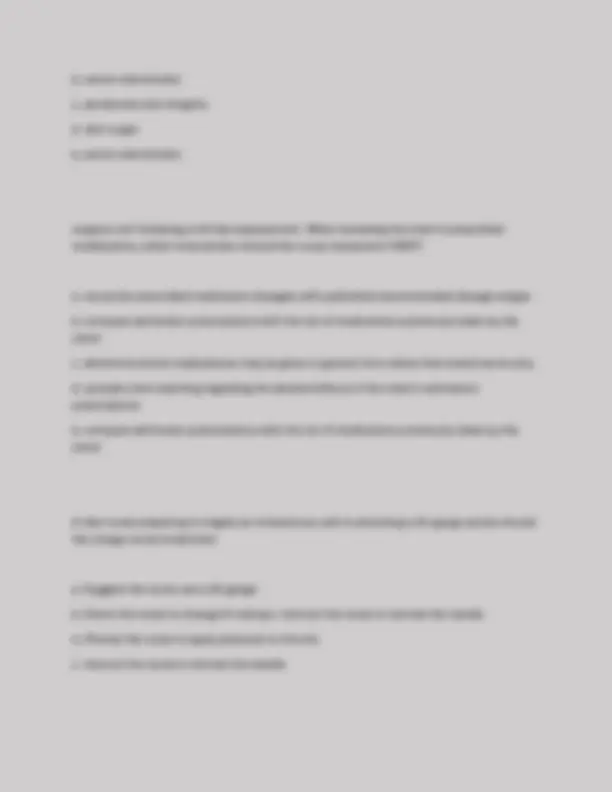
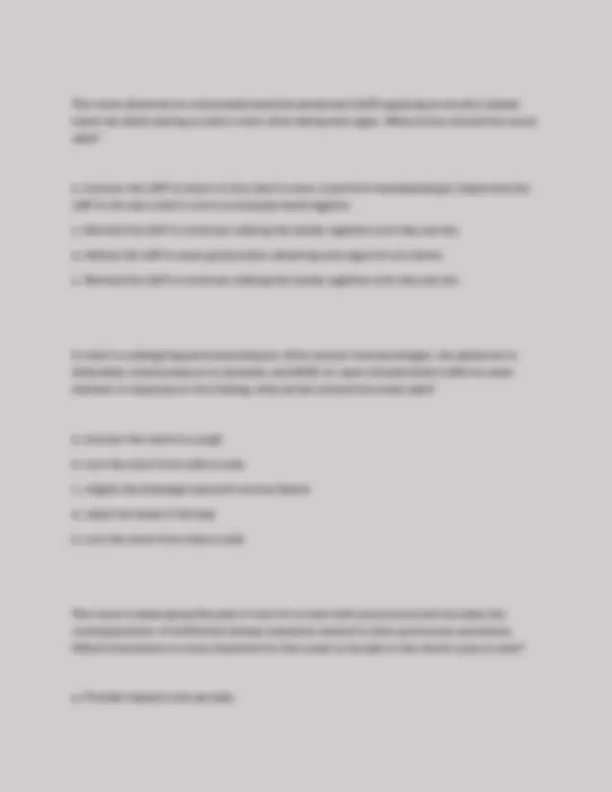
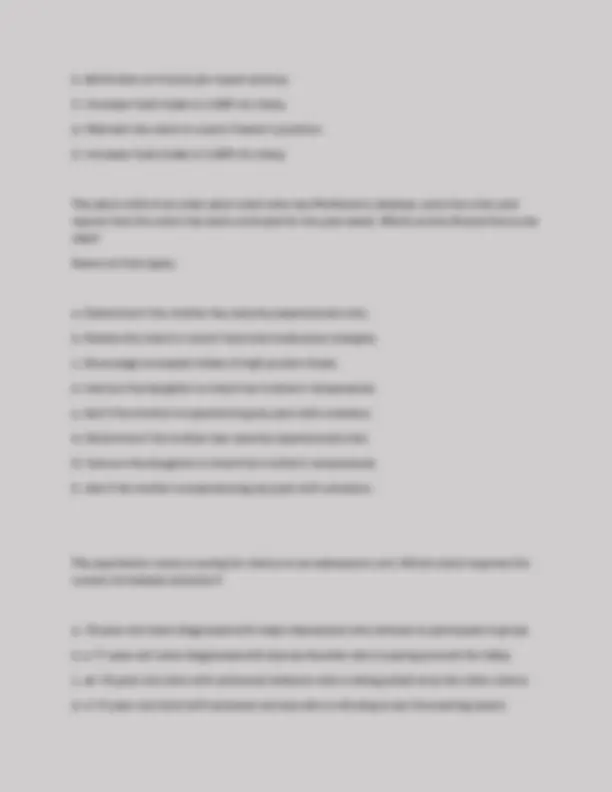
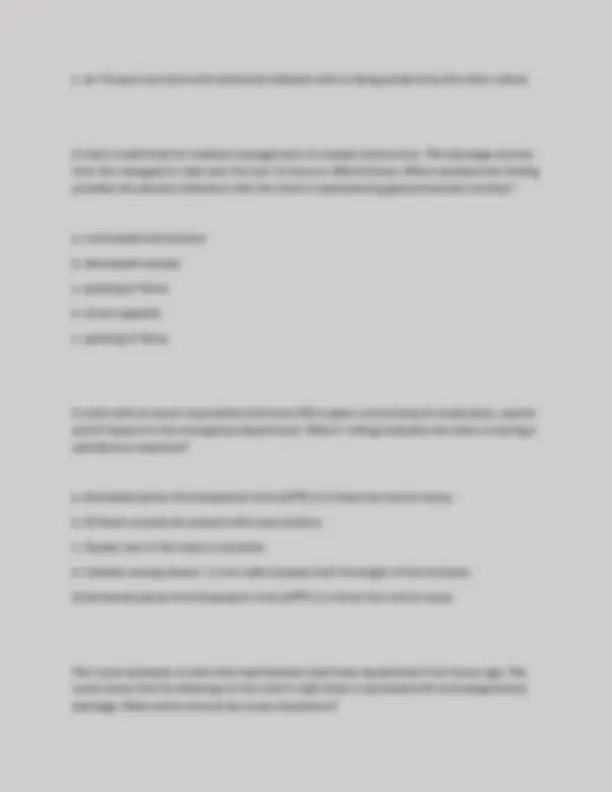
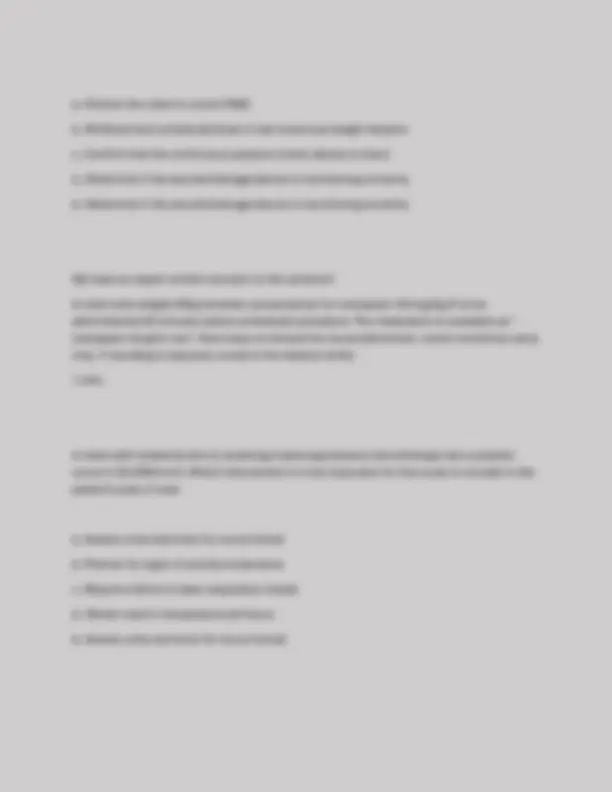
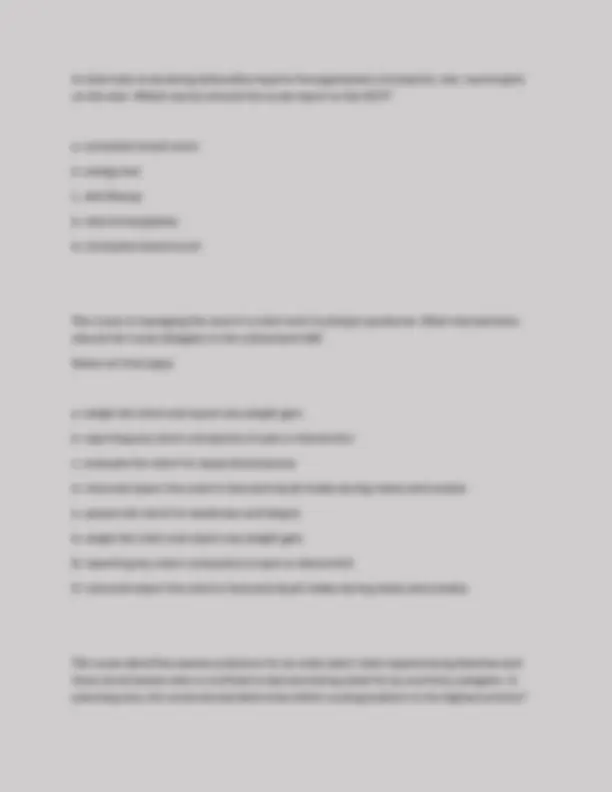
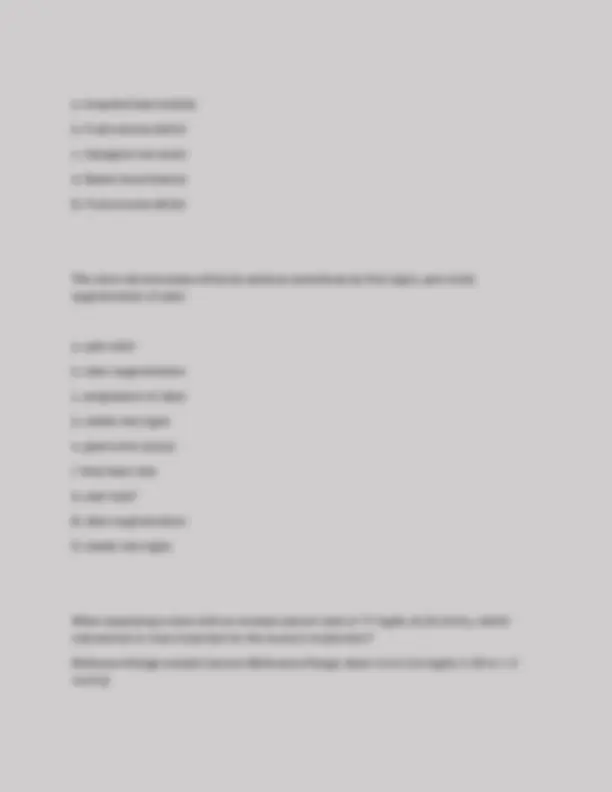
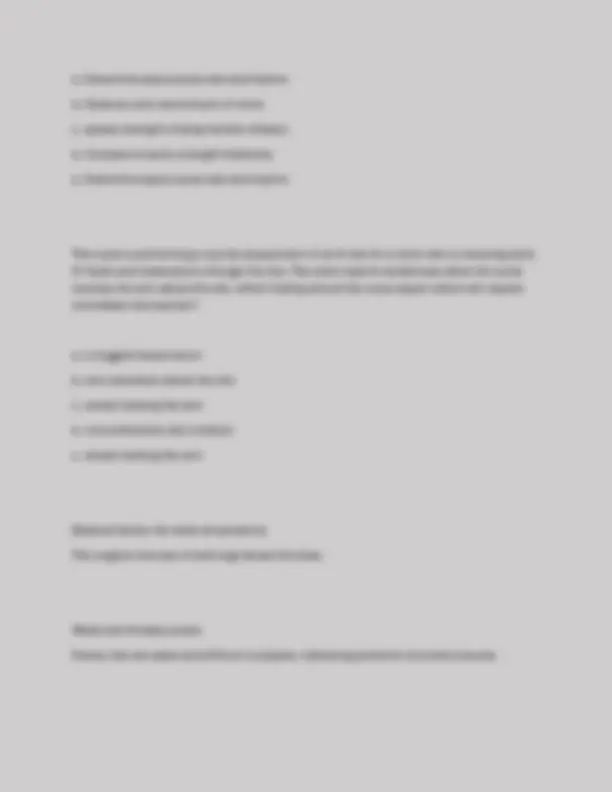
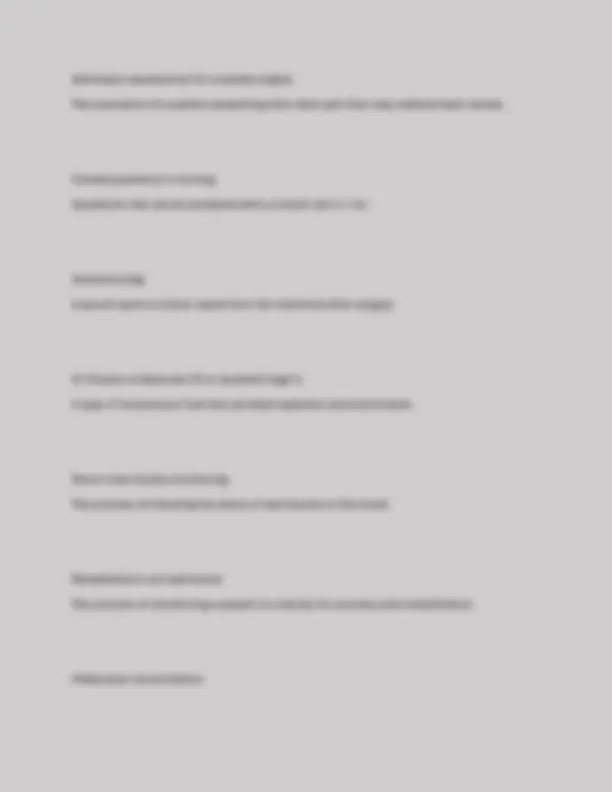
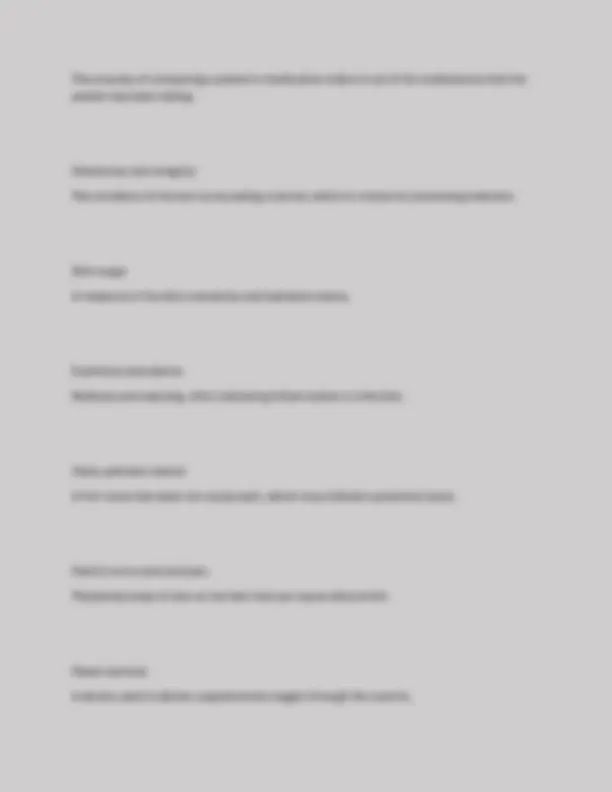
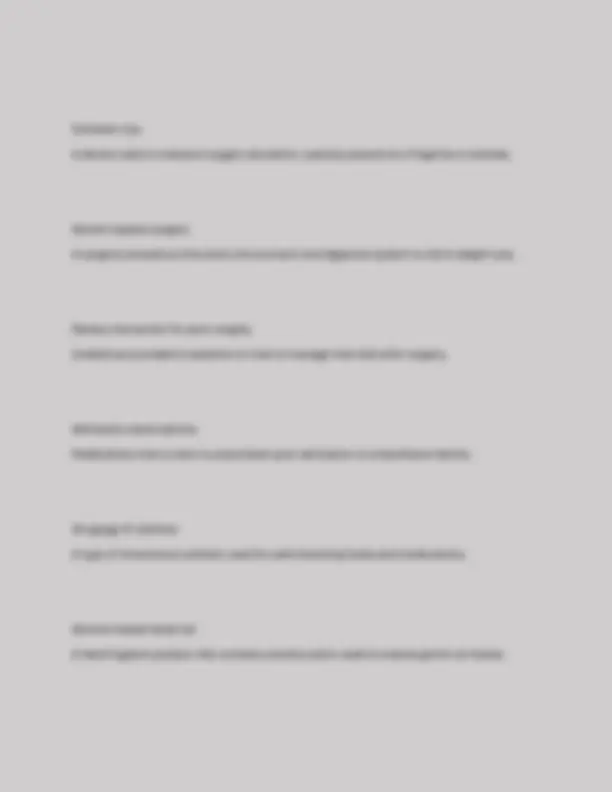
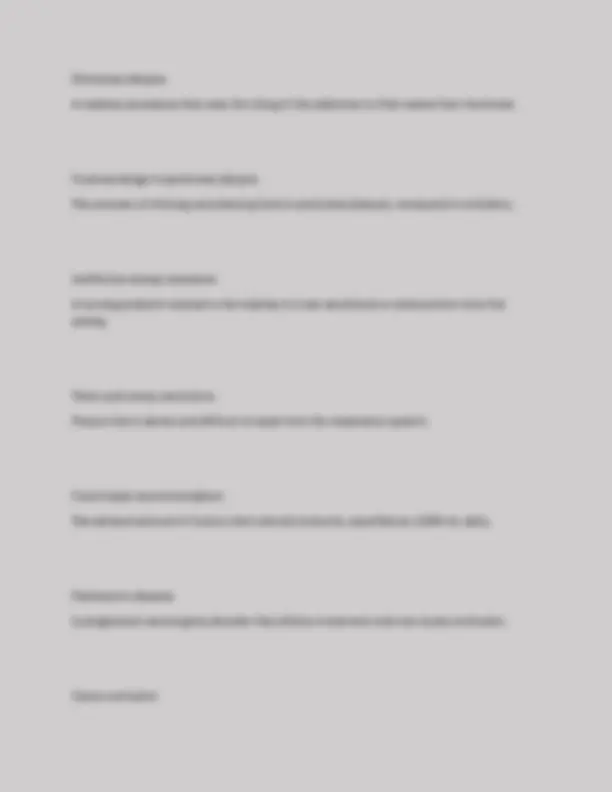
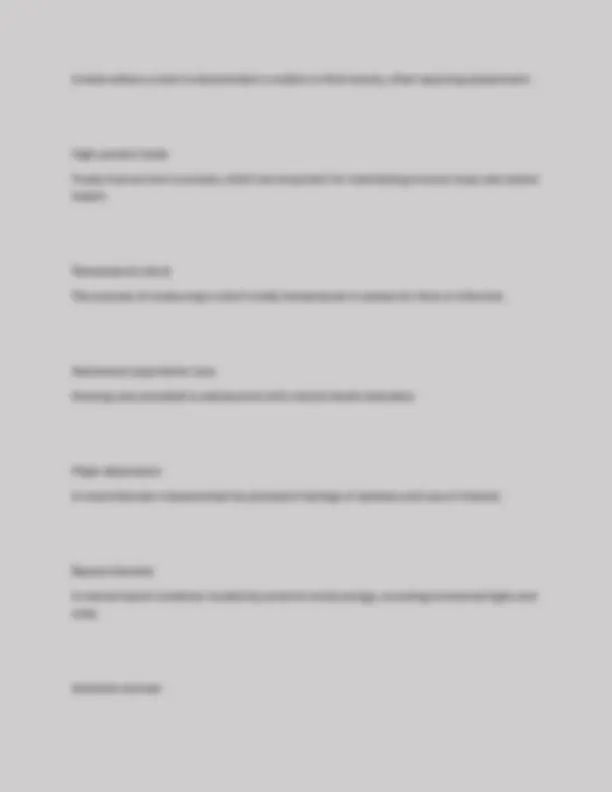
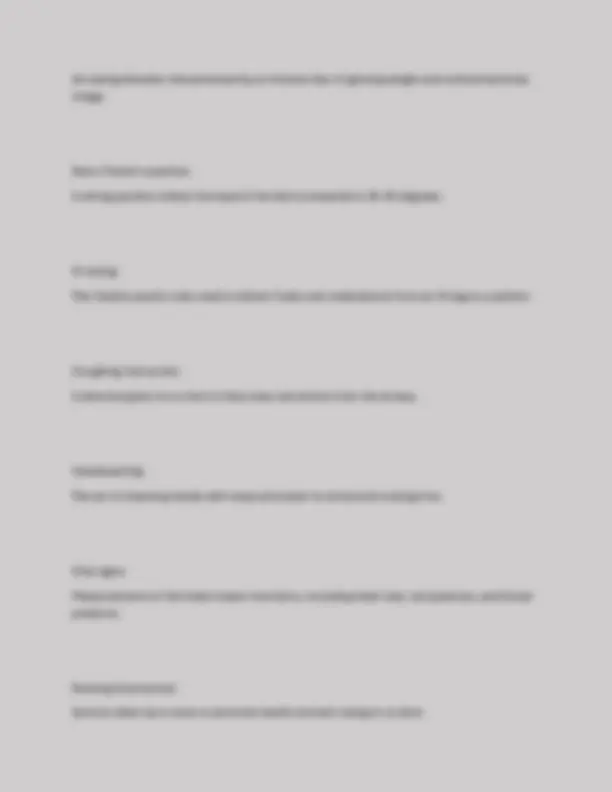
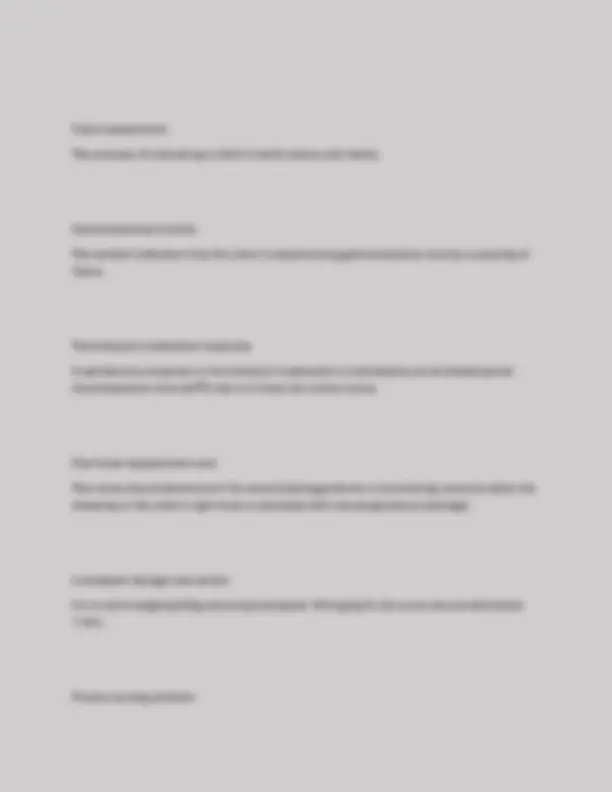
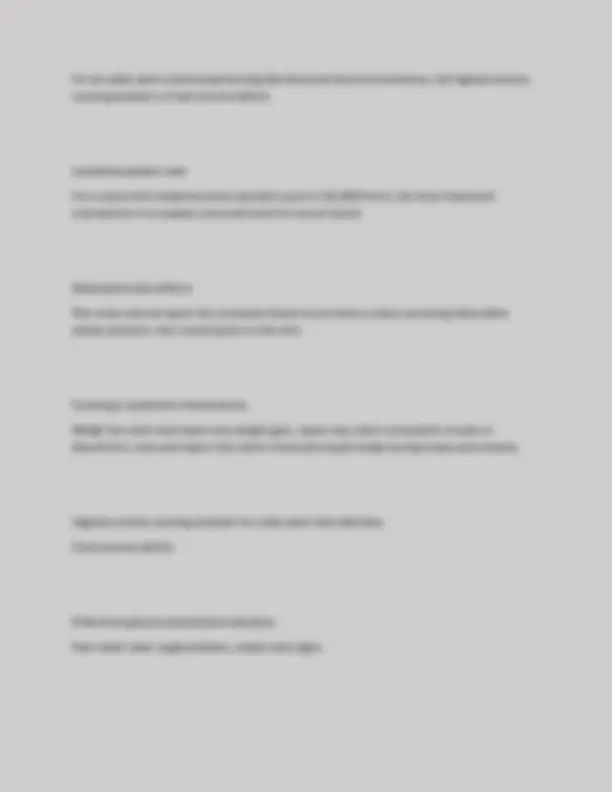
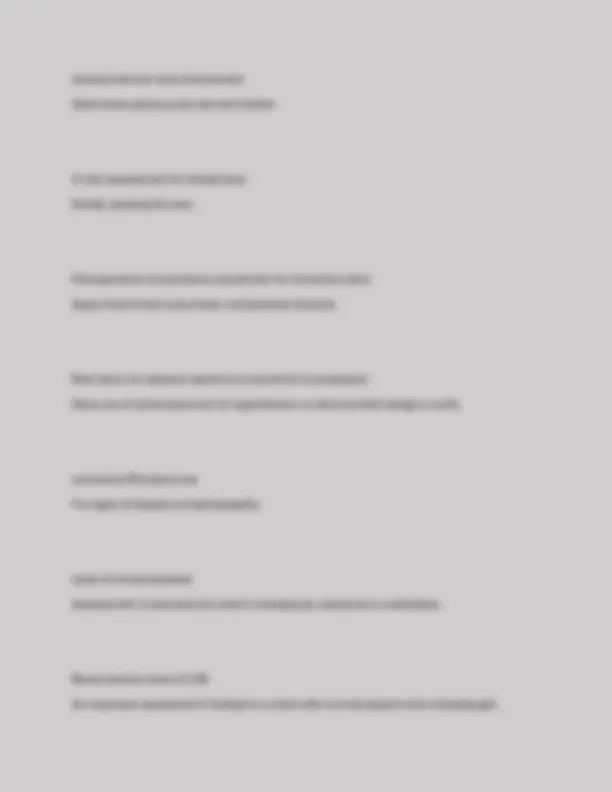
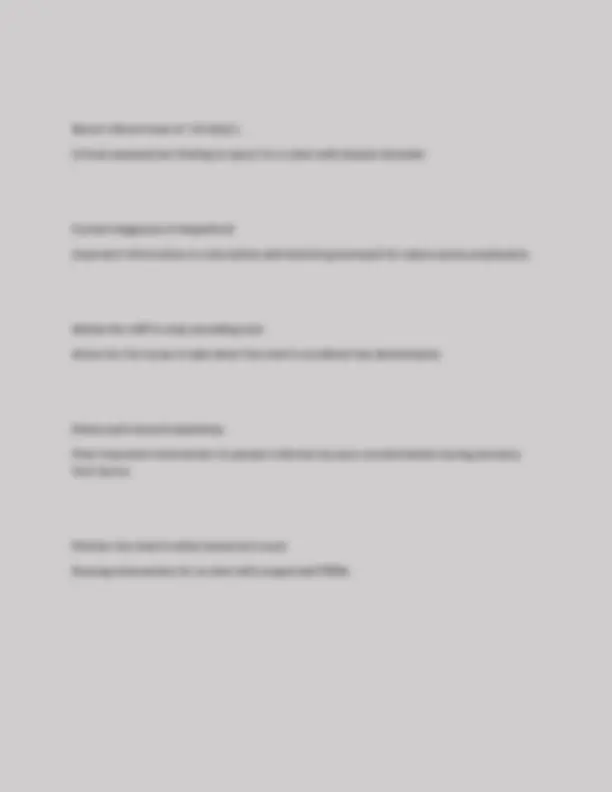


Study with the several resources on Docsity

Earn points by helping other students or get them with a premium plan


Prepare for your exams
Study with the several resources on Docsity

Earn points to download
Earn points by helping other students or get them with a premium plan
Community
Ask the community for help and clear up your study doubts
Discover the best universities in your country according to Docsity users
Free resources
Download our free guides on studying techniques, anxiety management strategies, and thesis advice from Docsity tutors
BSN 366 HESI RN FULL ACTUAL EXIT EXAM | ALL CORRECT QUESTIONS AND ANSWERS
Typology: Exams
1 / 49

This page cannot be seen from the preview
Don't miss anything!










































Institute contact precautions for staff and visitors Nursing intervention to prevent the spread of MRSA. Send wound drainage for culture and sensitivity Nursing intervention to determine the appropriate treatment for an infected wound. Ensure that the knot can be quickly released Action the nurse should take regarding wrist restraints before leaving a confused client's room. Half bow knot Type of knot used to attach wrist restraints to the bed frame. Explain to the UAP that changes in a client's condition should be reported immediately Recommended communication for the nurse regarding client care. Avoid sharing equipment between multiple clients Intervention to prevent infection during the acute phase of recovery from burns.
Use a gown, mask, and gloves with dressing change Precautionary measures to implement during wound care. Weight loss of 10 pounds in past month Assessment finding that may be relevant but less critical than serum lithium level. 6 hours of sleep in the past 3 days Assessment finding indicating potential sleep deprivation. Conversion of the client's PPD test from negative to positive Assessment finding relevant to tuberculosis exposure. History of intravenous drug abuse Potential risk factor to consider before administering isoniazid. Percussion of abdomen Assessment technique that may be used in clinical evaluations. Serum electrolytes
Admission assessment for older woman Apply a barrier cream to perianal areas. Admission assessment for older woman Implement toilet training program. Admission assessment for older woman Offer beverages at frequent intervals. Nonpharmacological intervention for Alzheimer's Use distraction and therapeutic communication skills. Nonpharmacological intervention for Alzheimer's Clarify reality with the client about delusional thoughts. Nonpharmacological intervention for Alzheimer's Reduce the client's interaction with others during the day. Nonpharmacological intervention for Alzheimer's
Awaken the client for reality checks every 4 hours at night. ICU client assessment priority Prioritize care for the client exhibiting concerning findings. Diminished breath sounds Diminished breath sounds in the right posterior base. Restrained and restless Restrained and restless with a slow volume alarm sounding. High-pressure alarm High-pressure alarm sounds when client is coughing. Audible voice An audible voice when client is trying to communicate. Allopurinol A client who has been taking allopurinol prophylactically comes into the clinic with reoccurring gout attack episodes in left ankle.
Amoxicillin prescription An infant who weighs 22 lb receives a prescription for amoxicillin 20 mg/kg/day PO in divided doses every 8 hours. Dosage calculation 1.3 mL. PACU vital signs Vital signs of oral temperature 99.8 F (37.7), HR: 62 bpm, RR: 8 bpm, BP: 95/54 mmHg, O2: 94% on 2 L/min nasal cannula. Medication administration Atropine. Blood glucose level A blood glucose level of 580 mg/dL (32.22 mmol/L). Client understanding Check blood sugar levels every four to six hours every day. Osteoporosis prevention
Low fat dairy products. Telemetry monitor Indicates ventricular fibrillation (VF). Immediate action for VF Defibrillate with one shock. Right hemicolectomy report The PACU nurse reports, 'The client has an intravenous (IV) infusion of 1000 mL lactated Ringer's infusing at 125 mL/hr into the left wrist with 300 mL remaining. Prescriptions include morphine sulfate 2 mg IV every 2 to 4 hours for pain, last administered 30 minutes ago; ondansetron 4 mg IV every 8 hours for nausea, last administered 15 minutes ago.' Additional information for nurse Peripheral pulses with full range of motion of both legs. Fractured left tibia assessment The nurse should note hand and forearm strength. Unstable angina pain questions
Response to STI syphilis client Answer the question directly and correct any misinformation. Action for vomiting client with scopolamine patch Notify the healthcare provider of the vomiting. Heparin Sodium infusion adjustment 900 units. Postoperative assessment for pneumatic compression devices Observe both lower extremities for redness and swelling. Palpate all peripheral pulse points Assess for volume and strength Rapid atrial flutter A condition where the heart beats rapidly due to abnormal electrical signals in the atria Amiodarone
A medication used to treat certain types of serious irregular heartbeat Heart Rate (HR) The number of beats per minute, reported here as 90 BPM Blood Pressure (BP) The pressure of circulating blood on the walls of blood vessels, reported here as 110/ Intervention for rapid atrial flutter Evaluate the rhythm of the heart rate Suicidal thoughts Thoughts about ending one's life or harming oneself Highest risk behavior for suicide Begin to show signs of improvement in affect Cataract extraction and lens implantation A surgical procedure to remove a cloudy lens and replace it with a clear artificial lens
A severe infection that leads to dangerously low blood pressure and organ failure Sepsis protocol A set of guidelines for managing patients with sepsis Chronic kidney disease A long-term condition where the kidneys do not function effectively Anuric A condition where the patient produces little to no urine Hemodialysis A treatment that filters waste and excess fluid from the blood Toileting schedule A planned routine for assisting patients with bathroom needs Signs of anemia Indicators such as fatigue, weakness, and pallor due to low red blood cell count
High potassium foods Foods rich in potassium that may need to be limited in kidney disease Perineal skin barrier cream A cream used to protect the skin from irritation Bilateral below-the-knee amputations The surgical removal of both legs below the knee. Weak and thready pulses Pulses that are weak and difficult to palpate, indicating potential circulatory issues. Admission assessment for unstable angina The evaluation of a patient presenting with chest pain that may indicate heart issues. Closed questions in nursing Questions that can be answered with a simple 'yes' or 'no'. Ileostomy bag A pouch used to collect waste from the intestines after surgery.
Erythema and edema Redness and swelling, often indicating inflammation or infection. Hard, painless nodule A firm lump that does not cause pain, which may indicate a potential issue. Painful corns and calluses Thickened areas of skin on the feet that can cause discomfort. Nasal cannula A device used to deliver supplemental oxygen through the nostrils. Oximeter clip A device used to measure oxygen saturation, typically placed on a fingertip or earlobe. Gastric bypass surgery A surgical procedure that alters the stomach and digestive system to aid in weight loss. Dietary instruction for post-surgery Guidelines provided to patients on how to manage their diet after surgery.
Admission prescriptions Medications that a client is prescribed upon admission to a healthcare facility. 24 - gauge IV catheter A type of intravenous catheter used for administering fluids and medications. Alcohol-based hand rub A hand hygiene product that contains alcohol and is used to reduce germs on hands. Peritoneal dialysis A medical procedure that uses the lining of the abdomen to filter waste from the blood. Fluid exchange in peritoneal dialysis The process of infusing and draining fluid in peritoneal dialysis, measured in milliliters. Ineffective airway clearance A nursing problem related to the inability to clear secretions or obstructions from the airway.
Adolescent psychiatric care Nursing care provided to adolescents with mental health disorders. Major depression A mood disorder characterized by persistent feelings of sadness and loss of interest. Bipolar disorder A mental health condition marked by extreme mood swings, including emotional highs and lows. Anorexia nervosa An eating disorder characterized by an intense fear of gaining weight and a distorted body image. Semi-Fowler's position A sitting position where the head of the bed is elevated to 30-45 degrees. IV tubing The flexible plastic tube used to deliver fluids and medications from an IV bag to a patient. Coughing instruction
A directive given to a client to help clear secretions from the airway. Handwashing The act of cleaning hands with soap and water to remove dirt and germs. Vital signs Measurements of the body's basic functions, including heart rate, temperature, and blood pressure. Nursing intervention Actions taken by a nurse to promote health and well-being in a client. Client assessment The process of evaluating a client's health status and needs. Gastrointestinal motility The earliest indication that the client is experiencing gastrointestinal motility is passing of flatus. Thrombolytic medication response